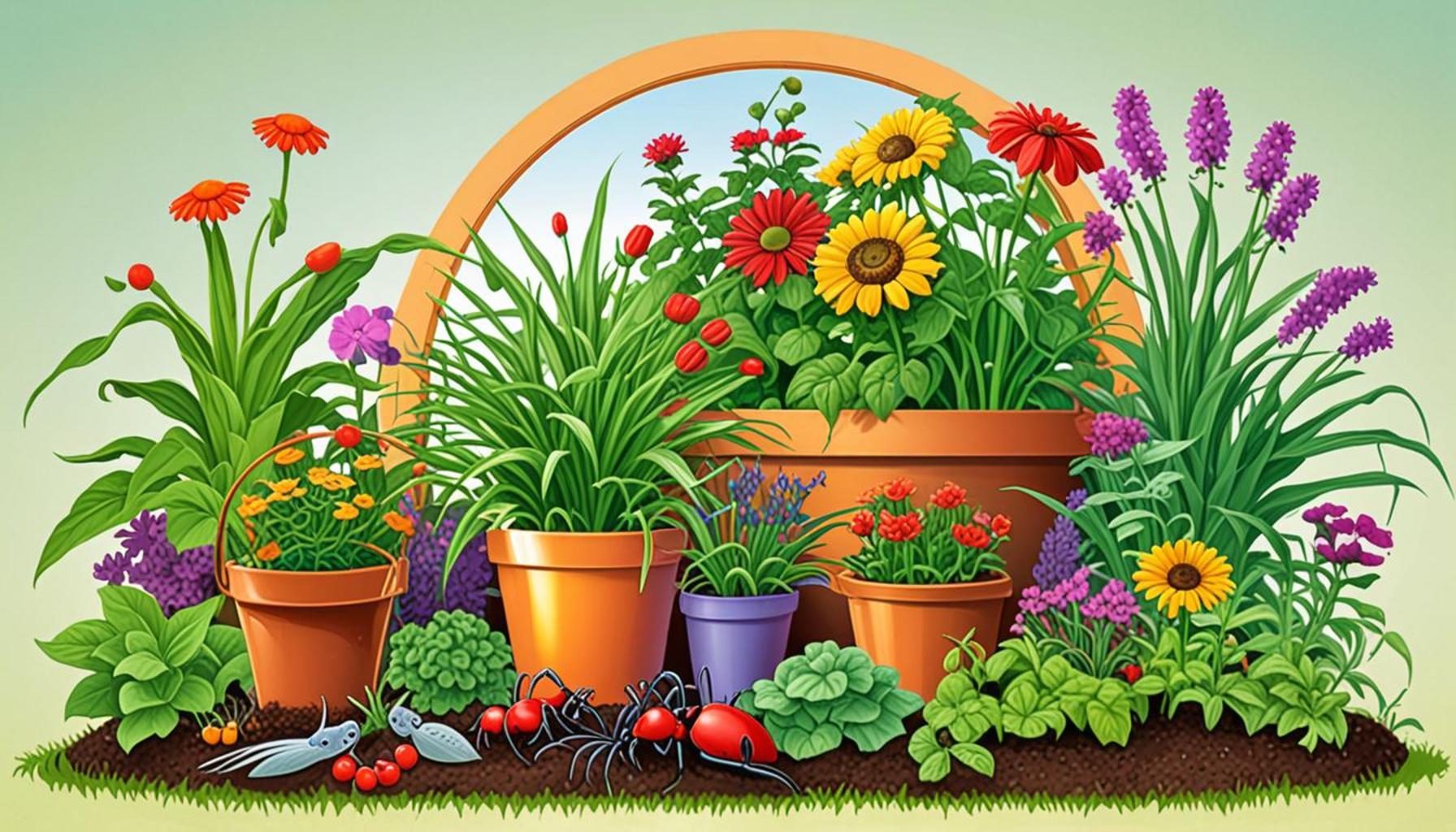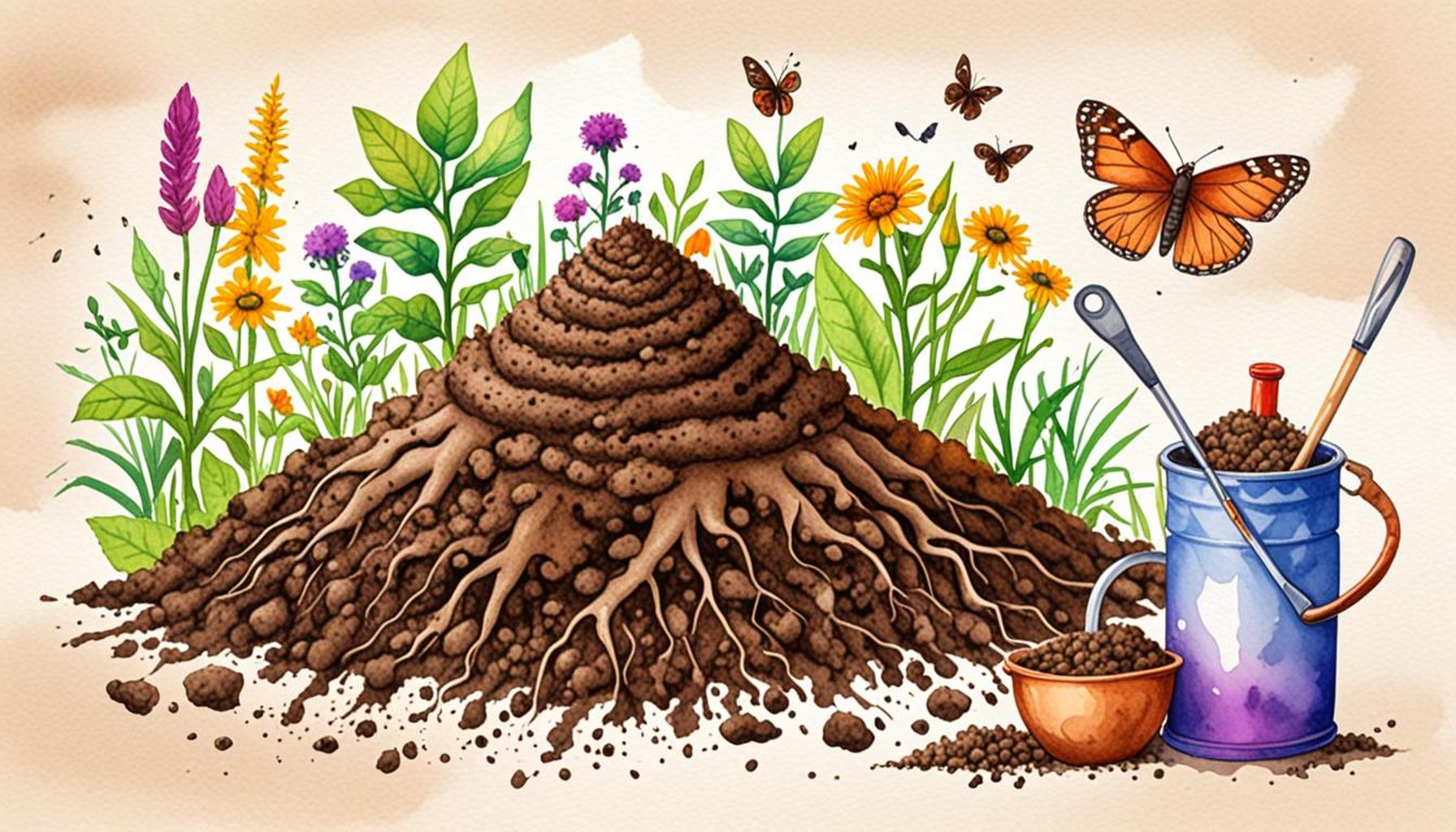Integrating Companion Planting for Effective Pest Management in Home Gardens

Harnessing Nature’s Allies for Pest Control
Managing pests in home gardens poses a significant challenge, but companion planting emerges as a formidable ally. By strategically pairing plants, gardeners can develop a harmonious ecosystem that reduces the need for synthetic pesticides and fosters a balanced environment. This practice, rooted in historical agricultural wisdom, enhances the vitality of plants while leveraging nature’s own defenses against harmful pests.
Many enthusiastic gardeners are beginning to recognize the advantages of planting certain species together. This approach not only promotes beneficial interactions between different plants but also yields numerous practical benefits, such as:
- Repelling harmful insects: Certain plants emit natural repellents. For example, the strong scent of marigolds can mask the aroma of vegetables like cucumbers, deterring pests such as aphids and cucumber beetles.
- Attracting beneficial pollinators: Flowers like borage and alyssum not only beautify the garden but also attract bees and other pollinators vital for the pollination of crops.
- Enhancing growth and flavor of crops: The classic combination of basil and tomatoes exemplifies this; basil is said to elevate the flavor of tomatoes while simultaneously repelling whiteflies and aphids.
- Improving soil health: Plants like legumes, including peas and beans, fix nitrogen in the soil, enhancing fertility for nutrient-hungry crops that follow.
For instance, the partnership of corn, beans, and squash, commonly referred to as the “Three Sisters,” illustrates a classic Native American agricultural method where each plant supports the others. Corn provides a structure for the beans to climb, beans enrich the soil, and squash spreads across the ground, preventing weed growth and retaining moisture.
Employing companion planting is far more than a mere garden fad; it signifies a growing commitment to sustainable agricultural practices. As awareness of environmental issues escalates, harnessing nature’s own defenses has become an increasingly attractive alternative to conventional pest management. Utilizing this technique not only promotes a flourishing garden but also reduces dependence on harmful chemicals, ensuring a safer environment for families and wildlife alike.
Step into the fascinating realm of companion planting and effective pest management techniques, and unlock the full potential of your home garden! With a little research and creativity, it’s entirely possible to cultivate a lush, productive space that thrives harmoniously with nature.
DIVE DEEPER: Click here to learn more
Understanding Companion Planting: The Science Behind the Benefits
To appreciate the full scope of integrating companion planting for effective pest management in home gardens, it’s essential to delve into the science that underpins this organic technique. Companion planting leverages the natural relationships between different plant species to enhance biodiversity and disrupt pest cycles. This practice not only creates a natural deterrent against invasive species but also improves the overall health of the garden ecosystem.
One key element in companion planting is the principle of allelopathy, where certain plants exude chemicals that inhibit the growth of nearby plants. For example, the notorious black walnut tree releases a compound called juglone, which can be toxic to many garden plants. Understanding such interactions can arm gardeners against potential pitfalls while maximizing the benefits of combining various species.
Moreover, companion planting plays a crucial role in promoting a habitat for beneficial organisms. These allies can include:
- Predatory insects: Ladybugs and lacewings prey on aphids, while spiders can help keep many garden pests under control.
- Parasitic wasps: These tiny insects lay their eggs inside harmful pests, naturally reducing their populations.
- Microorganisms: Healthy soil organisms, such as mycorrhizal fungi, work symbiotically with plant roots to enhance nutrient uptake and bolster plant defenses.
For gardeners in the United States, understanding local pest dynamics is just as critical. Different regions face unique challenges based on climate, soil type, and prevalent pest species. For instance, those in warmer southern states may contend with pests like whiteflies and thrips, while northern gardeners might battle Japanese beetles. Tailoring companion planting strategies to local conditions can significantly bolster the effectiveness of pest management efforts.
Additionally, diverse plant pairings can create a more resilient garden ecosystem. Planting a variety of crops not only confuses pests but also reduces the spread of diseases that often accompany homogenous planting. This polyculture approach contrasts sharply with monoculture, where a single crop variety is exploited and inherently more susceptible to pest outbreaks.
Evidence suggests that well-planned companion plantings can improve yields. For example, when sweet alyssum is interplanted with lettuce, studies have shown enhanced growth rates and fewer pest infestations. The floral partners attract parasitic wasps, which target aphids, thus forming a natural pest control system while enhancing lettuce productivity.
As gardeners embark on their journey to implement companion planting, thorough research will lay the foundation for successful pest management strategies. Experimentation and observation can reveal which plant combinations work best in individual gardens, allowing for sustained growth and a healthier ecosystem. By embracing this harmonious gardening practice, one can nurture a thriving space that not only showcases beautiful blooms and delicious harvests but also significantly reduces reliance on chemical interventions.
Integrating Companion Planting for Effective Pest Management in Home Gardens
Exploring the dynamic interactions between different plant species reveals how companion planting can be a transformative strategy for achieving effective pest management in home gardens. This method not only enhances biodiversity but also creates a more resilient ecosystem that can naturally deter pests. By implementing specific combinations of plants, gardeners can take advantage of natural relationships that promote plant health and suppress pest populations.
One of the key principles of companion planting is utilizing allelopathy, where certain plants release substances into the soil that can impede the growth of pest species or attract beneficial insects. For example, marigolds are known for their ability to repel nematodes and certain aphid species while enhancing the vitality of nearby crops. This form of chemical warfare is just one aspect of how home gardeners can harness nature’s arsenal in their favor.
In addition to pest deterrence, companion planting enhances pollination and nutrient uptake. Legumes, such as beans, can fix nitrogen in the soil, benefiting neighboring plants that thrive on nutrient-rich conditions. Pairing them with plants that require more nitrogen, like corn, fosters a mutually beneficial relationship that can yield higher crop production.
The time-tested practice of integrating companion plants can lead to reduced reliance on chemical pesticides, resulting in a healthier garden environment. Not only does this approach bolster plant vitality, but it can also attract beneficial insects like ladybugs and lacewings that naturally prey on common garden pests, further eliminating the need for chemical interventions.
As gardeners seek ways to manage pests effectively while maintaining environmental balance, the principles of companion planting present an intriguing avenue worth exploring. Curious about how to start your own companion planting journey? It’s time to delve deeper into the world of plants and their interconnectedness to unleash the full potential of your home garden!
| Advantages | Description |
|---|---|
| Natural Pest Repellents | Utilizing plants like marigolds that naturally deter pests, reducing the need for chemicals. |
| Enhanced Biodiversity | Increased plant diversity that creates a robust ecosystem and fosters beneficial insects. |
DISCOVER MORE: Click here to uncover natural pest control ideas
Effective Strategies for Implementing Companion Planting in Your Garden
As homeowners increasingly seek sustainable solutions for pest control, integrating companion planting for effective pest management in home gardens emerges as a practical approach that combines biodiversity with ecological fundamentals. By embracing this technique, gardeners can create a thriving ecosystem that naturally curbs pest populations and enhances the vibrancy of their gardens.
One highly effective strategy in companion planting is the use of trap crops. These are plants that attract pests away from the main crops. For example, planting radishes or nasturtiums near beans can lure aphids and other pests away from the more expensive or vital crops. Strategically placing these crops can significantly lower pest pressure, allowing the primary plants to flourish without the competition for nutrients and resources.
Additionally, intercropping is an effective technique where two or more crops are grown simultaneously in the same space. This can involve planting a vigorous plant alongside a slower-growing plant to create a mutually beneficial relationship. For instance, the combination of cabbage and dill is beneficial; the dill attracts parasitic wasps that prey on cabbage moths, providing natural pest control while the growth of one plant can provide necessary shade for the other.
Moreover, certain plants can enhance the overall health of neighboring crops through nutrient transfer. This is especially evident with the classic combination of corn, beans, and squash, commonly referred to as the “Three Sisters” in Native American gardening traditions. Corn provides support for climbing beans, beans fix nitrogen in the soil, and squash spreads across the ground, acting as a living mulch to suppress weeds and retain moisture. This partnership showcases how diverse plant interactions can foster a nutritious and low-maintenance garden.
Furthermore, understanding the floral diversity within your garden can have significant implications for pest management. Incorporating flowering plants such as marigolds and sunflowers can attract a variety of beneficial insects that prey on harmful pests. Marigolds, in particular, release compounds that deter nematodes, making them a popular choice among vegetable gardeners. Meanwhile, sunflowers can provide a striking visual element while attracting pollinators and predatory insects alike.
Seasonal rotation of companion plants is also an important component of maintaining a healthy garden. By refreshing plant arrangements from year to year, gardening enthusiasts can disrupt pest life cycles. For example, if you discover that aphids have taken a particular liking to your green beans one season, rotating your beans to a different area of the garden—possibly with companion plants like garlic or basil—can hamper the establishment of the pest population.
Education plays a significant role in successful pest management through companion planting. Gardeners can leverage local community resources, such as cooperative extension offices or gardening clubs, to learn from the experiences of fellow enthusiasts. Additionally, many universities offer research-based guidance specific to regional climates, pest outbreaks, and effective plant combinations, providing invaluable insight into targeted companion planting strategies. By gathering knowledge and sharing findings, gardeners can contribute to a sense of community focused on sustainable and organic practices.
Incorporating these strategies into home gardens not only fosters an effective pest management system but also cultivates a deeper connection with the environment, celebrating the intricate relationships between plant life and beneficial insects. As this holistic approach gains traction, more gardeners may find themselves reaping the fruits of their labor with minimized chemical usage and healthier ecosystems.
DON’T MISS OUT: Click here to learn how to spot infestations
Conclusion
In conclusion, integrating companion planting for effective pest management in home gardens not only provides a sustainable alternative to chemical pesticides but also fosters a rich biodiversity that benefits both plants and ecosystems. By skillfully utilizing techniques like trap crops, intercropping, and seasonal rotations, gardeners can effectively manage pests while promoting the health and vitality of their plants. Each carefully chosen companion can enhance nutrient availability, attract beneficial insects, and improve overall garden resilience against pest invasions.
Moreover, the practice of companion planting can serve as a platform for community engagement and knowledge sharing. By connecting with local gardening groups and leveraging available educational resources, homeowners can refine their strategies and remain informed about the best combinations for their specific gardens. This continual learning process not only contributes to personal success but also strengthens community ties built on shared gardening experiences.
Ultimately, as more individuals embrace the principles of companion planting, they will likely experience the rewards of a naturally flourishing garden with fewer pest-related challenges. By fostering harmonious relationships within their garden ecosystems, homeowners can cultivate landscapes that are not only enjoyable but also resilient, allowing nature to play its vital role in pest management. As you embark on your gardening journey, consider the power of companion planting and discover the myriad possibilities it presents for creating a sustainable and thriving garden sanctuary.


